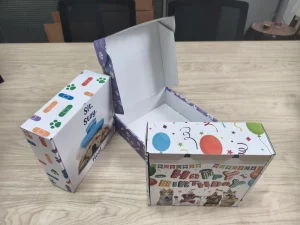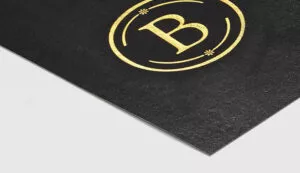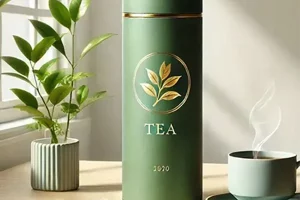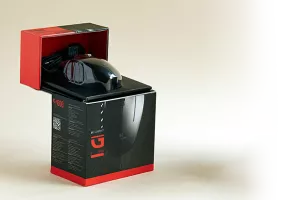When it comes to beverages, packaging is more than just a protective cover. It plays a huge role in ensuring freshness, convenience, and brand identity. Let’s dive into what beverage packaging really is.
Beverage packaging refers to the materials used to contain and protect liquids, ensuring safety, freshness, and ease of use. It also serves as a branding tool and convenience factor.

Whether you are a beverage producer or a consumer, the right packaging can make a huge difference. Now, let’s explore the different packaging types and materials, and why they are essential in the beverage industry.
What is the best packaging for beverages?
Beverages come in many forms, from juices to carbonated drinks. Each requires a specific type of packaging to keep the product fresh and appealing. Let’s look at what makes the best packaging for beverages.
The best packaging for beverages is one that maintains the product’s quality while being cost-effective, user-friendly, and visually appealing. Different types of drinks require different packaging solutions.

Dive deeper Paragraph:
The best packaging depends on the beverage type. For example, carbonated drinks are best packaged in bottles that can withstand pressure, while juices and milks are often packed in cartons to preserve freshness and extend shelf life. In addition to protecting the contents, the packaging must appeal to consumers and serve as a communication tool for the brand. Materials used for beverage packaging include glass, PET (plastic), aluminum, and paperboard.
- Glass bottles: These are commonly used for premium beverages like wines, spirits, and craft sodas. Glass offers a high-quality feel and is excellent for preserving flavor but can be heavy and breakable.
- Plastic bottles (PET): Lightweight, durable, and cost-effective, PET is widely used for sodas and bottled water. However, it has environmental concerns, prompting many brands to explore alternatives.
- Aluminum cans: Ideal for soft drinks, energy drinks, and beer, cans are lightweight, recyclable, and maintain the product’s carbonation and taste.
- Paperboard cartons: Often used for juices, milks, and non-carbonated beverages, cartons are effective at preserving freshness and are easily stackable for storage and transportation.
The ideal packaging balances protection, convenience, cost, and sustainability. Beverages packaged in glass or aluminum cans are perceived as premium, while those in plastic bottles or cartons may be seen as more affordable options.
What are the three types of packaging?
Packaging can take many forms, but there are three main types that are commonly used in the beverage industry. Let’s break them down.
snippet paragraph:
The three main types of packaging for beverages are primary, secondary, and tertiary. Each serves a different purpose in the packaging process.

Understanding the three types of packaging helps clarify the entire beverage packaging process. Here’s what each type involves:
- Primary Packaging: This is the direct contact between the beverage and the consumer, such as the bottle, can, or carton. It is the most important layer because it ensures the safety and freshness of the drink. It also serves as a visual representation of the brand.
- Secondary Packaging: This is used to group and protect primary packages. For example, cans or bottles are often packaged in cardboard boxes or shrink-wrapped for easier transportation and storage. Secondary packaging helps with logistics and provides additional space for branding.
- Tertiary Packaging: This includes bulk packaging used to move large quantities of products, such as pallets and crates. It ensures products are handled safely during distribution.
Each type of packaging plays a critical role in the product’s journey from the factory to the consumer. Packaging at all levels ensures that the beverage reaches its destination safely, and that it looks appealing and performs well.
What are the materials of beverage carton?
Beverage cartons are a common packaging solution for juices, milk, and non-carbonated drinks. But what exactly are they made of? Let’s find out.
Beverage cartons are typically made from a combination of paperboard, polyethylene, and sometimes aluminum, providing a strong yet lightweight packaging solution.
Beverage cartons are designed to be lightweight, strong, and capable of preserving the contents for an extended period. Here’s a breakdown of the materials used:
- Paperboard: The primary material, providing the structure for the carton. It’s renewable, recyclable, and provides a good surface for printing branding and product information.
- Polyethylene (PE): A plastic layer is typically added to paperboard cartons to create a barrier against moisture and air. This helps preserve the freshness of the beverage and prevent leaks.
- Aluminum foil: Some beverage cartons include a thin layer of aluminum to provide an additional barrier against light and oxygen. This is especially useful for beverages like juice and milk that need to be kept fresh.
The combination of these materials ensures that beverage cartons are durable and effective at protecting the contents while maintaining a lower environmental footprint compared to other packaging options. The growing popularity of beverage cartons is also tied to their recyclability, which appeals to environmentally-conscious consumers.
How big is the beverage packaging market?
The beverage packaging market is huge and continues to grow. But just how big is it, and what factors are driving its expansion?
The beverage packaging market is valued at billions of dollars and is expected to grow as consumer demand for eco-friendly, sustainable packaging increases.

The global beverage packaging market is a multi-billion-dollar industry, with growth driven by several factors. According to recent market reports, the global market size was valued at over $160 billion in 2020, with projections to grow at a compound annual growth rate (CAGR) of around 5-7% over the next several years. This growth is being driven by factors such as:
- Sustainability: As consumers become more environmentally conscious, there is increasing demand for eco-friendly packaging1 materials. Companies are exploring alternatives to plastic, such as biodegradable materials and recyclable options like glass and aluminum.
- Convenience: The rise in on-the-go lifestyles has led to greater demand for convenient, portable packaging. Beverage packaging that is easy to carry, drink from, and dispose of is becoming increasingly important.
- E-commerce: The growth of online retail has created new opportunities for beverage packaging. Packaging needs to be durable enough for shipping while still being aesthetically appealing for consumers.
The market is also influenced by regional factors, with developed markets such as North America and Europe focusing on sustainability, while emerging markets in Asia and Africa are seeing increased demand for beverage products due to growing populations and rising incomes.
Conclusion
Beverage packaging is a key component of the beverage industry. The right packaging ensures freshness, safety, and an engaging consumer experience. As the market evolves, sustainability and convenience continue to be driving forces.
-
Exploring eco-friendly packaging options can help businesses align with consumer preferences and sustainability goals. ↩








